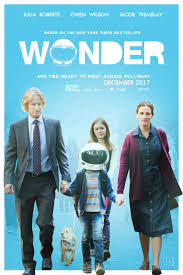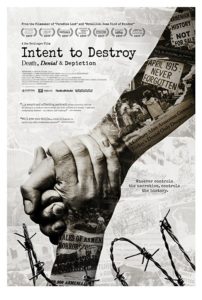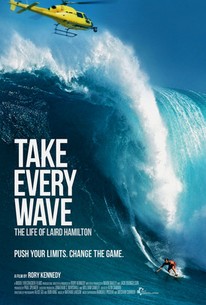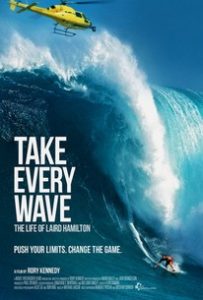Interview: RJ Palacio and Stephen Chbosky on “Wonder”
Posted on November 13, 2017 at 5:26 pm

R.J. Palacio’s book Wonder is more than a best-seller — it is a movement. Middle-schoolers and their families love the story of Auggie, a 10-year-old with facial deformity who for the first time attends school in 5th grade. It is not a story about triumphing over disability; Auggie has more than triumphed when the movie begins. It is instead a heightened exploration of universal themes. In middle school, the moment when people are most acutely aware of differences and most excruciatingly anxious about fitting in, a boy who is very different arrives. The book and the movie it inspired are about family and friendship and, above all, the importance of choosing to be kind. The movie opens November 17, 2017.
In an interview, Palacio and the film’s director, Stephen Chbosky talked about what kindness means to them and why it is so important to include not just Auggie’s point of view but the other characters’ as well.
RJ, as you’ve spoken to kids in schools, what have they told you about the impact that this book has had on their lives and the choices that they make?
RJP: I’ve spoken to probably hundreds of schools at this point and thousands of kids. It’s very gratifying and very moving to hear ten year olds and eleven year olds come up to you and say, “I want to be a better person after reading this book.” You think, “Well, you’re ten years old and you’re probably an amazing person already,” but to hear them say that is so moving. I tend to be an optimist in life and I tend to believe that there is an inherent goodness in most people. Kids to me have this wonderful urgent and earnest willingness to be noble. I think our job as parents and as educators and as teachers is to tap into that inherent wanting to be noble. I don’t know if they would call it nobility but I see it that way.
Most kids just really want to get along. They want to make other people feel better. They’re mischievous sometimes and sometimes, yes, they border into cruelty sometimes just because they’re feeling like they want to be funny or they’re navigating these uncharted waters. They haven’t had a lot of practice at being a fully realized human being yet and then as they’re growing up, when they’re ten or eleven it’s really kind of the first time that they’re actually exploring the power that they have to reach out and be friends with people and what being an enemy means. So they’re discovering all of this and as parents we can guide them a little bit. At that age what’s happening sometimes is that parents tend to step back a little bit and think, “Well, she doesn’t listen to me anymore, she’s twelve years old,’ but my feeling is that they’re still listening at that age. Maybe when they’re sixteen or seventeen they stop listening but at twelve or thirteen they might pretend that they’re not but they’re still listening.
SC: Let me jump in for a second here and add something to that because I think it’s very profound. We all know Lord of the Flies, where kids left on their own become brutal. How many times have you heard an adult say “Kids can be cruel?” Well, kids can also be kind and there is ample proof of both and yet for whatever reason adults on some level like to emphasize how cruel kids can be. I’ll tell you a quick personal story. I have not thought of this in thirty years but I just thought of it right now. When I was in fifth grade we started to work on public speaking in school and so we would have to stand in front of the class. One kid per morning would have to lead the assembly. This girl every time it was her turn she cried uncontrollably because she was so frightened of standing in front of us all. You would think that if kids are cruel (and let’s go with that premise for a second) we would be so mean to this girl. Every month (I’m actually kind of getting choked up remembering this) we would root for her. It didn’t matter who you were. We were all: “Come on Betsy, you can do it this time” and on the last day her voice was quaking but she didn’t cry. I never forgot it…I’m having a moment right now, remembering it. That’s what kindness can do.
The story itself is extremely kind in exploring the perspectives of different characters, including Auggie’s older sister, Via, something you’ve continued, RJ, in a book called Auggie and Me. Why is that important?
RJ: In order to tell Auggie’s story from a 360° point of view, for us to understand the impact that he had on his community, on his friends, on the school, I had to leave his head and I had to go into different perspectives. His sister was the first one that I really wanted to explore. I just figured here is a girl who was fiercely protective of her brother, she’s a good girl but as just a matter of fact she has to be by necessity the one that’s overlooked a little bit in her family. She’s sort of like a self-cleaning oven. She’s self-sufficient. The parents don’t have to spend a lot of time worrying about her. They can spend most of their time worrying about her little brother who actually needs them to worry him. So I thought going to the different perspectives was a really good way of telling Auggie’s story but also having people understand that everybody’s got a story to tell. Everybody has something about ourselves that we can change or that we worry about. I wanted kids to realize that maybe Auggie’s difference is the most obvious but every single character and every single person you meet has something that they think makes them different and each has to carry their own little challenges and little burdens. We just might not be able to see them as clearly.
The story really is about friendship, set in a time when friendships become so vital and so fraught.
SC: We all know that when you’re young your friends become become your family more than in any other time in life. So it amplifies what an act of kindness can mean. When you are a kid you are much more vulnerable and so everything becomes more important and everything sounds a little louder and everything hurts a little deeper and I think that’s what’s so powerful about RJ’s story.
What does kindness mean to you?
RJ: I think of kindness as sort of a compilation of several different words — compassion, empathy, tolerance, love, forgiveness. It’s all of those things mashed up into one word which is kindness. It’s something that makes us human in a way that nothing else, though it is so hard to achieve kindness sometimes. It’s one of the most gratifying things in the world to receive and when you receive kindness from someone you’re that much more predisposed to give kindness to someone else. It’s one of the very few things that can actually spread. It’s infectious and it can grow. We’re living in times where kindness itself is almost becoming politicized and being seen as a sign of weakness when to me it’s a sign of strength. The ability to be kind to those who are not empowered or who are being ostracized or being ridiculed or being bullied takes courage.
The “precept” Auggie’s teacher gives the class quotes Wayne Dyer, who said, “When given the choice between being right or being kind, choose kind.” But sometimes being right is important, too, isn’t it?Absolutely, yes, and it is a fine line. That’s why I always say it takes a lot of courage to be kind because being right is important too but I think it takes a lot of heart be able to discern when it’s really important to just kind of stay true to your gut about what is needed in life.
Given the choice we should all aspire to have both and to win hearts and minds. Whatever it is you do professionally or personally with your family, with your friends or your colleagues we all have the power we all have the capacity to some degree to affect change around us so that the choice doesn’t need to be made.
Julia Roberts is so good in this film. The look on her face when Auggie first has a friend who wants to come over has so many emotions at once. What is it like to direct her?
It’s like being Michael Phelps’ swimming coach. She is so good at what she does and she can convey every emotion at the drop of a dime, she can change her approach on the drop of a dime, too. Any director will tell you there are two performances; one is the one that the audience gets to see because you’re cutting the best moments together and you’re finding the tone and you’re finding the pacing and the music and everything else, and there’s everything else that you that you left out. She never had a bad take, she was generous to her co-stars, she made everybody better (especially me) and I can’t say enough about her as an artist or a person. Every take was perfect no matter how many ways we tried it.



